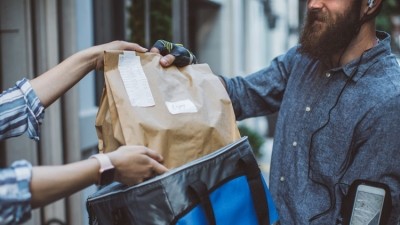Hospitality price increases track below inflation level

Between September 2021 and June 2023 sub-categories within F&B including cafés, delivery, Quick Service Restaurants (QSR), and restaurants have all seen a rise in ATV, according to research conducted by CACI.
The only exception was in the pubs and bars sector, where ATV fell by 3%.
The average spend rise across all sectors was 12% for the period, according to figures from CACI's Brand Dimensions research. This is compared with an average rise in inflation of 16% over the past two years, indicating efforts by brands to keep their prices competitive, it says.
The greatest increase was seen in food delivery services, which saw an 18% uplift in ATV. This was driven by UberEats, whose ATV has grown the greatest, up 24%. However, Deliveroo consistently has a higher ATV across the time period by about £4.50 on average and has seen ATV rise by 12%, says CACI.
“Following ATV across the F&B sector provides a great insight into the way that certain brands, and indeed industries, are changing their offer. This is of course tempered by inflation in the past two years, which averaged around 16% across that period of time, so an ATV rise isn’t simply an indication of success, but comparing peers and competitors allows us to draw some really interesting conclusions,” says Paul Langston, partner at CACI.
“The average spend rise across all of those brands sits at around 12%, which could indicate a sector-wide effort to drive down costs to a point where price rises can be kept below inflation, keeping their proposition as attractive as possible.”
Rises in the QSR sector
QSR has also had a strong performance since September 2021, with average ATV rising 14%. This is driven mostly by Pret A Manger whose ATV has risen 28% since September 2021, followed by KFC and McDonald’s at 21% and 20%, respectively.
“Pret outstrips all of the others in terms of ATV growth, benefitting from the increasing return to the office and propensity to spend while there,” says Langston, who suggests that KFC’s strong ATV rise was connected the rise in the costs of chicken production over the past couple of years.
Looking at individual brand performance across this time period, the biggest increases in ATV were at sushi group YO! - up 50% - and Black Sheep Coffee – up 36%.
In terms of restaurants, Dishoom, Franco Manca and Giggling Squid have all seen strong uplifts in ATV, according to the research.
The biggest falls in ATV were from Gourmet Burger Kitchen, Hotel Chocolat and Brewdog, which saw drops of 14%, 9% and 9%, respectively.
Least affluent groups hit by price rises
Breaking the trends in ATV down by user groups, all segments saw a rise in ATV across F&B since September 2021, with the least affluent groups, classified by CACI as ‘struggling estates’ and ‘difficult circumstances’ seeing the largest growth at 10%.
In line with the overall trends, the largest growth in the ‘difficult circumstances’ segment was within food delivery services, where ATV has risen 19% from £18.12 to £21.69. However, this was one of the lowest ATV among other groups in June 2023, with the ‘lavish lifestyles’ consumer segment recording the highest ATV at £30.10.
“Taking into account customer demographics too – using our population segmentation tool Acorn – shows that the least affluent groups are the ones that have put up with the biggest ATV increase,” says Langston. “One of these groups, ‘difficult circumstances’, saw an increase in Food Delivery Services ATV of 19%, but the £22 they now pay per transaction is still amongst the lowest across all Acorn groups.
Comparing just Q2 2022 to Q2 2023 for a year-on-year comparison, similar trends persist, with both QSR and food delivery services having the biggest increases in ATV at 10%.
KFC and McDonald’s have had strong performance in Q2 2023, likely correlating with rising costs causing both greater demand for these restaurants and likely price increases from the brands.
The vast majority of operators had their highest ATV in December 2022 or April 2023, pointing to an increased propensity to spend during the festive season and also across the Easter break, says CACI.
“The former you would expect, as a time of the year when customers want to spend more lavishly if they can. The April uplift likely reflects multiple operators using the start of the financial year as a milestone to pass on price increases,” adds Langston.
“However, since then 86% of F&B brands have seen a slight reduction in ATV, implying many customers have responded to that by trading down. How this tracks in the coming months will be fascinating, especially in the context of a rapidly changing national picture on finances, with rising interest rates running alongside cooling inflation and the upcoming modest energy price reduction.”
CACI's Brand Dimensions captures more than £4bn of debit card spend across 300 named brands, with more than 50 in hospitality, looking at cafés, delivery, pubs and bars, QSR, and restaurants.






